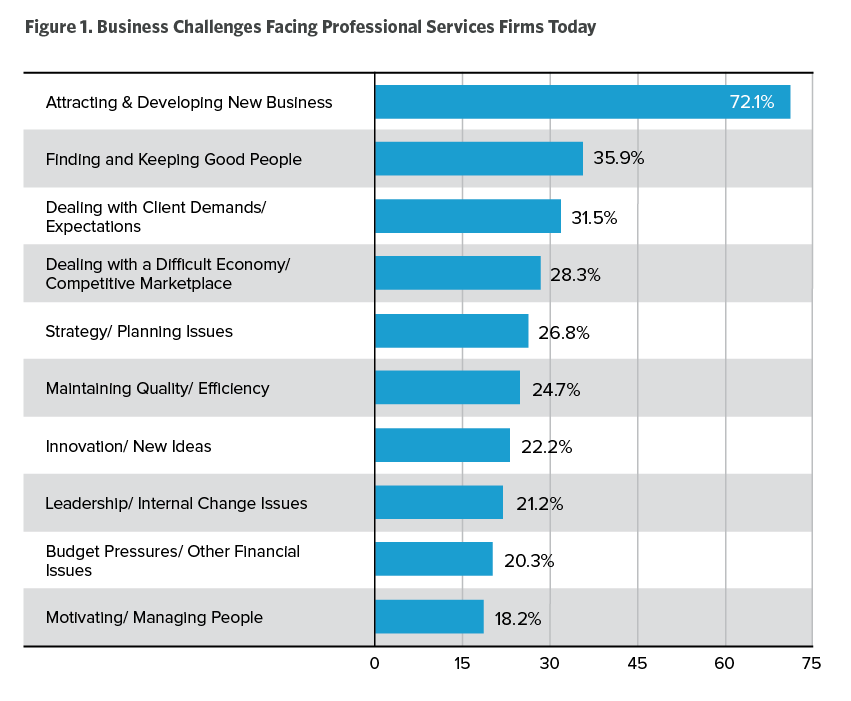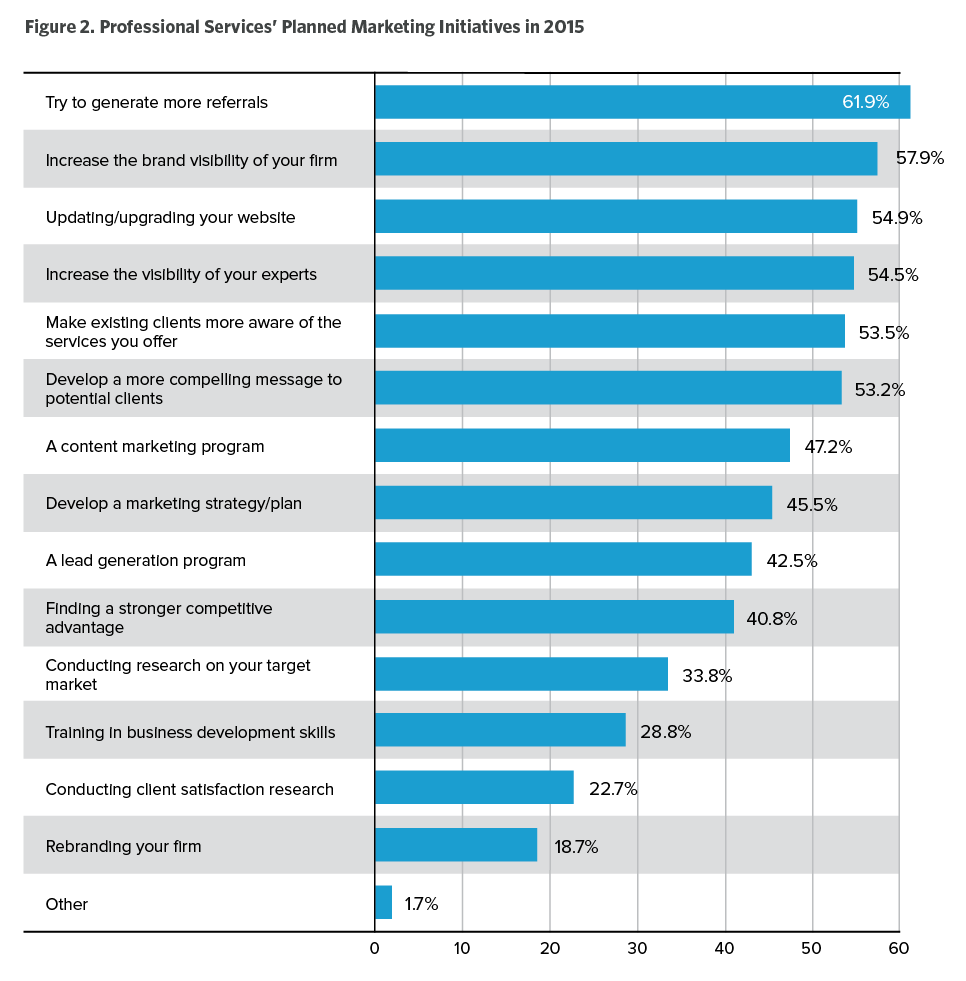“Changes in technology are driving disruption at a pace we haven’t seen before,” says Jim Moffat, chairman and CEO of Deloitte Consulting, in a recent Washington Post interview. “I think that creates interesting opportunities for the companies that are prepared to take advantage of it and some significant threats for those that aren’t.”
It’s true: the professional services landscape is changing quickly. And as we head into 2015, firms face some big questions. Which business challenges are the most urgent? How should one prioritize marketing efforts? At the Hinge Research Institute, we wanted to see how firms across the professional services industries were answering these questions. So we decided to find out.
We conducted a survey of over 500 professional services firms, seeking insights from senior decision-makers at businesses in fields including management consulting, architecture/engineering/construction, accounting and finance, marketing, technology, and legal services.
We’ve published the results in our free research report, 2015 Marketing Priorities for Professional Services Firms. The report not only looks at professional services marketing trends in aggregate, but breaks down the results by industry to identify significant industry-specific insights.
Let’s take a look at some of the key findings.
The importance of new business
First, what are firms top challenges in the new year? We asked respondents to list the major issues they face, and one challenge very clearly stood above the others.
From a strategic perspective, developing new business is the overriding challenge for firms across industries, cited by over 72% of respondents. The message is clear: firms are not only seeking new business, but actively prioritizing it. It is a top-of-mind concern.
This does not mean, however, that developing new business is the only challenge facing firms today. Respondents named an average of 3.5 unique challenges, with each of the ten issues above proving to be major concerns for many firms. Notably, the second most commonly cited business challenge was recruiting, with many firms recognizing a need to both find and retain good employees.
Taking the initiative
Now we understand the challenges that firms perceive – but what kind of professional services marketing techniques are they employing to solve those problems? We asked our respondents to indicate which initiatives they expected to undertake in 2015.
Respondents indicated that in 2015, they plan to utilize an average of 5.7 professional services marketing initiatives, and a wide range of different initiatives were cited. This isn’t surprising: in a professional services marketplace with many evolving pressures – and the universal desire to attract new business – firms are taking a many-pronged approach to their challenges.
SEE ALSO: Top 10 Marketing Techniques for Professional Services
The top marketing emphasis was generating more referrals, identified by over 61% of respondents. This was followed closely by several initiatives:
- Brand marketing
- Updating and improving websites
- Building the visibility of experts
Significantly, these are all initiatives that mutually support one another: firms might build the visibility of experts by giving them a platform to post educational content on an updated, streamlined website – all of which helps build the visibility of the firm’s brand. Professional services brands generally recognize that an effective marketing strategy is comprised of many different moving parts that work together to achieve the ultimate aims of heightened visibility, new business, and growth.
How firms will move ahead
Will firms pursue their professional services marketing initiatives through internal marketing resources, external partners, or some mix of the two? We asked respondents how they expected to move ahead.
- 42% will use only internal resources
- The rest (58%) will use some external resources or rely entirely on outside partners
The widespread expectation that firms will use external resources reflects the nature and diversity of firms’ overall priorities. In order to take a many-pronged approach to their challenges, firms may need to rely on many different skill-sets: web development, writing, and coaching for rising experts, for example. This variety of talents is most easily leveraged through outside partners.
It’s important to note that our study found significant industry-specific differences in firms’ priorities. While the overall storyline remains the same – firms are using a variety of techniques to attract new business – the specifics for each industry tell their own more detailed stories.
While the report contains too many specific findings to discuss here, below are a few exemplary insights:
- A/E/C firms show a unique focus on building awareness of their services
- Accounting and finance firms are especially focused on developing their experts
- Management consulting firms seek to attract and develop new business at an ever higher rate than firms in other industries
As firms seek to keep up with the pace of change across the professional services industries, we can expect more firms to adopt marketing techniques that will raise their brand profiles and help reach new audiences. For the full picture on each of the industries covered by our survey, as well as analysis of the big picture trends, we welcome you to download the full report.
On Google+ or LinkedIn? Follow us +HingeMarketing and join us on LinkedIn.




